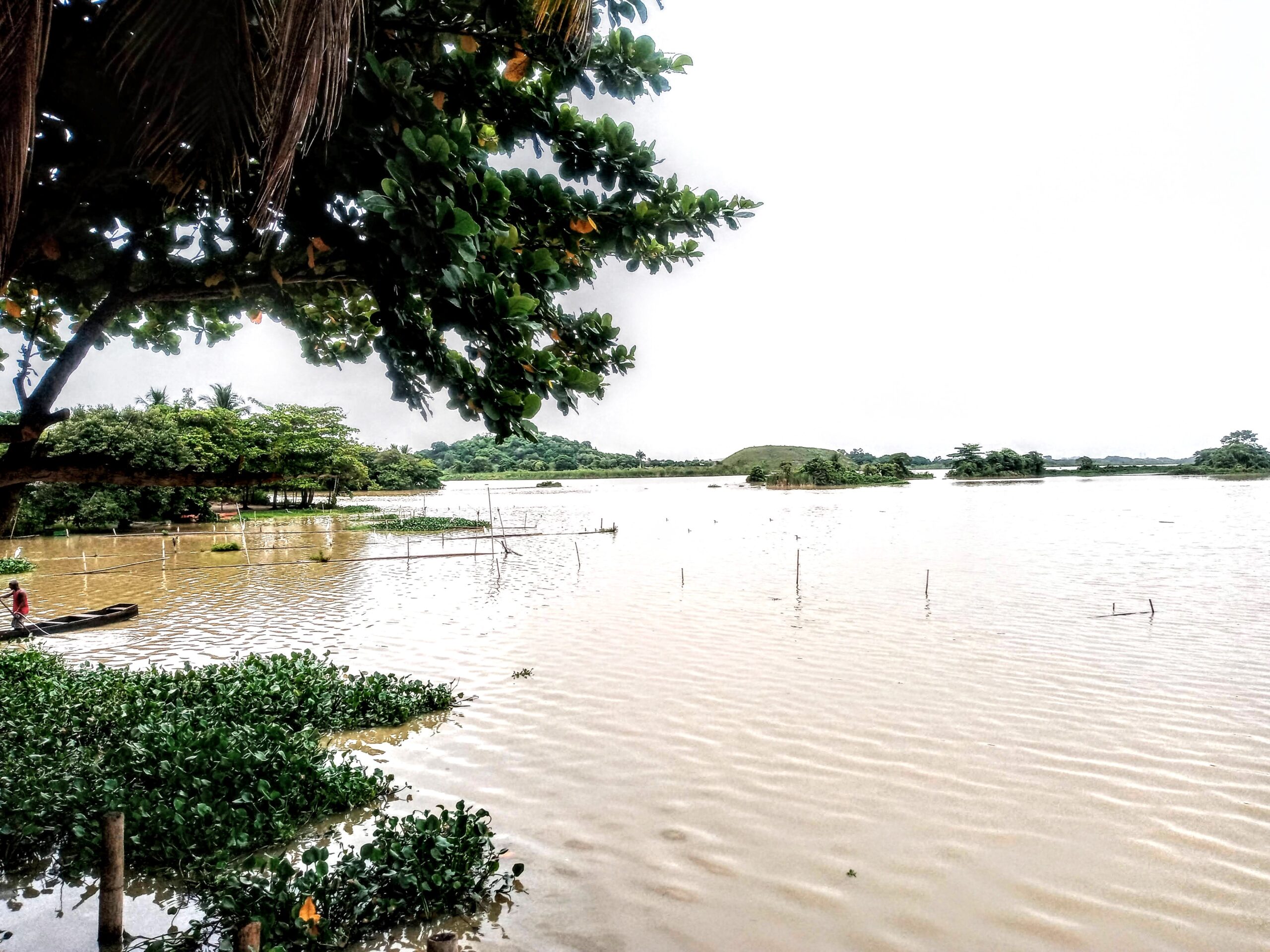
Clique aqui para Português
This article is part of a series created in partnership with the Behner Stiefel Center for Brazilian Studies at San Diego State University, to produce articles for the Digital Brazil Project on environmental justice in the favelas for RioOnWatch.
In early 2020, some 6 million people in Greater Rio de Janeiro were forced to change their daily habits, due to the presence of a strange material that should not have been found in drinking water. Geosmin, an organic substance produced by bacteria that appeared in Rio’s primary water source, the Guandu River, left the water with an unpleasant, boggy taste and odor. Since then, geosmin contamination has been a recurring problem in the water supplied by Rio’s water and sewage utility, CEDAE.
This has created a drinking water crisis in dozens of neighborhoods in the city of Rio, especially in favelas and peripheries. Those who are able, have resorted to alternatives, such as purchasing mineral water. Five months later, what was suspected became fact. A report by the Federal University of Rio de Janeiro’s (UFRJ) microbiology laboratory found that Guandu’s water contained an abundance of bacteria from human feces, which suggests contamination by sewage.
Changes in the Lives of 55 Fishermen from the Lagoinha Region
This scenario has dramatically impacted Lagoinha, a community between the municipalities of Nova Iguaçu and Seropédica in Greater Rio, which belongs to the Guandu River Protection Area (APA do Guandu). Also found there are Lagoa do Quiabal and Lagoão do Guandu, lagoons which have expanded due to the installation of dams. The nearby community knows them as the “Lagoas do Guandu” [the Guandu Lagoons] or the “Pantanal Iguaçuano” [the Iguaçuan Wetlands], a green space preserved mainly by the local population.
This is the home of Vitor Ambrozioni, president of the Lagoas do Guandu Fishing Association (Pesguandu) and environmental activist. A resident of the neighborhood for over 40 years, he tells what life was like in the area:
“There were kids who never left the street, but we never left the river (laughs). We used to fish a lot, my wife and I, when we were still dating. The kids here would go fishing, swimming, walking in the woods, eating fruit from the tree. We didn’t have [digital] technology.”
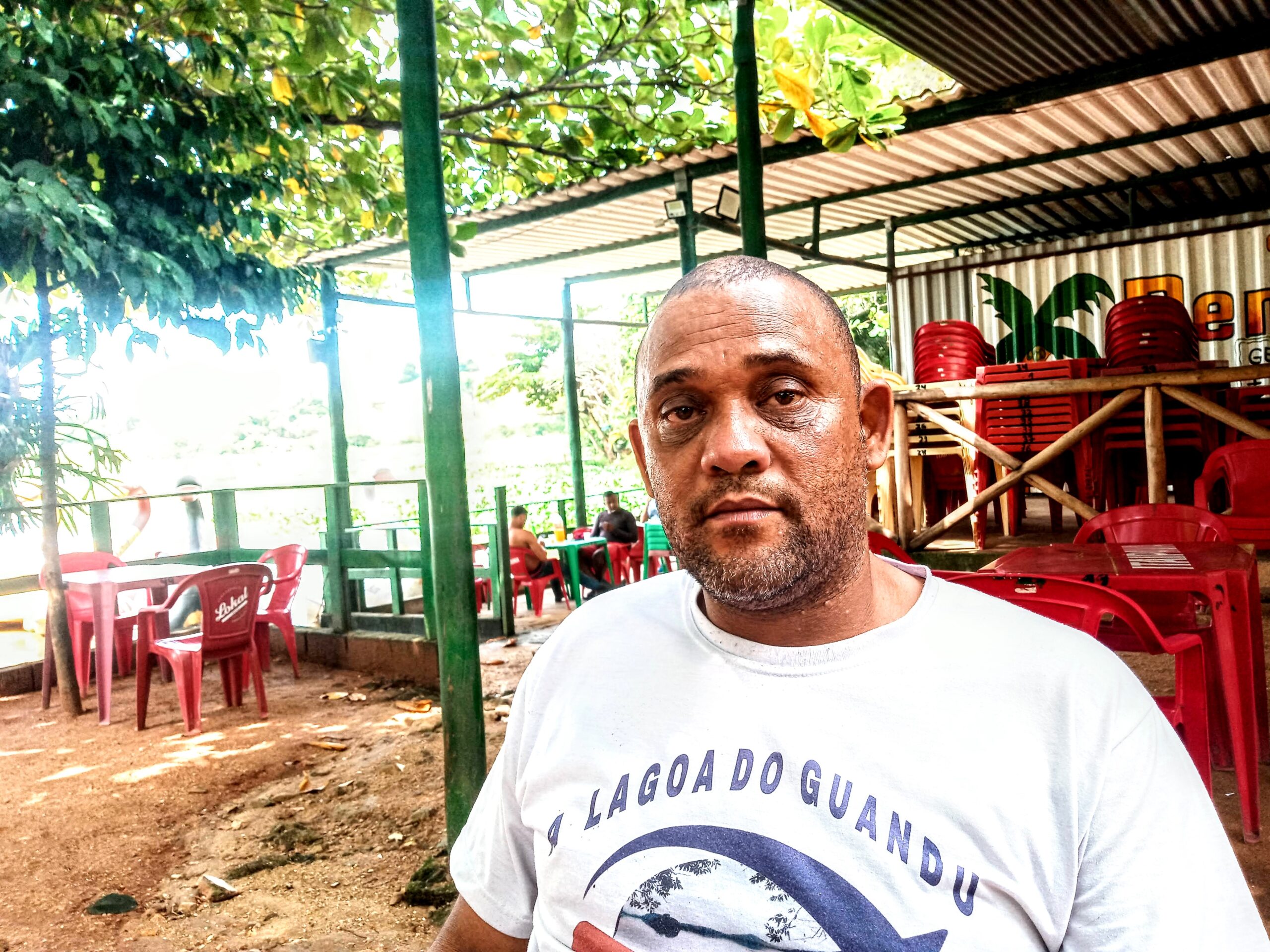
He says that before 2018, Lagoinha was a prosperous region for those who made a living from fishing. Ambrozioni would wake up at around 5:30am, returning home at 6pm, spending more than 12 hours navigating along the Guandu River and its tributaries—the Queimados, Poços and Ipiranga—which supply water to the municipalities of Nilópolis, Nova Iguaçu, Duque de Caxias, Belford Roxo, São João de Meriti, Itaguaí, Queimados, and Rio de Janeiro.
He collected wolffish, tilapia, and anchovy, species he described as abundant and healthy at the time. He had a wooden shack on the old Rio-São Paulo Highway and claimed that the fish didn’t stay on ice in the cooler for more than 24 hours. He sold everything quickly. However, with the water crisis, the fish were also contaminated and the damage became evident. He used to earn between R$2,000 (US$384) and R$2,500 (US$480) per week, filling up four 25kg (~55lbs) boxes with fish.
“My health used to be perfect, despite the physical effort I made. Today, I’ve been working with a formal contract as a bricklayer for three years. I feel oppressed, and I have mental health problems because of the pressure and low self-esteem. But this is what I have, to survive.” — Vitor Ambrozioni
Ambrozioni and Ademário Jordão Pereira are part of the group of 55 fisherpeople registered in the Pesguandu Association. Basically, everyone had to choose between three options: moving, changing professions, or combining limited fishing in the region’s rivers and lakes with side jobs and suffering from a lack of financial stability. Forced to change his profession, Pereira, a resident of Lagoinha for over 30 years, now a former fisherman, has become a merchant. Six years ago, he set up a small restaurant on the banks of the Pantanal Iguaçuano.
The merchant states that in 2016, pollutant levels represented a much lower risk of toxicity. Pereira says that back then, one hour of fishing was enough time for one week’s profit, which allowed him to save money and make life changes when things became scarcer. Although he still works with fish when serving meals, the entire tilapia shipment is delivered from more distant places, such as Lagoa de Marapendi, in Barra da Tijuca, and Maricá. Located in Greater Rio, the city of Maricá is east of the Guanabara Bay, or two and a half hours by car from his establishment. The round trip cost of gasoline from Lagoinha to Maricá is R$200 (~US$40).
“The irony doesn’t stop. The same fish that I took from here for years, using my own fishing net, I now have to get from the other side of the state and pay more.” — Ademário Jordão Pereira
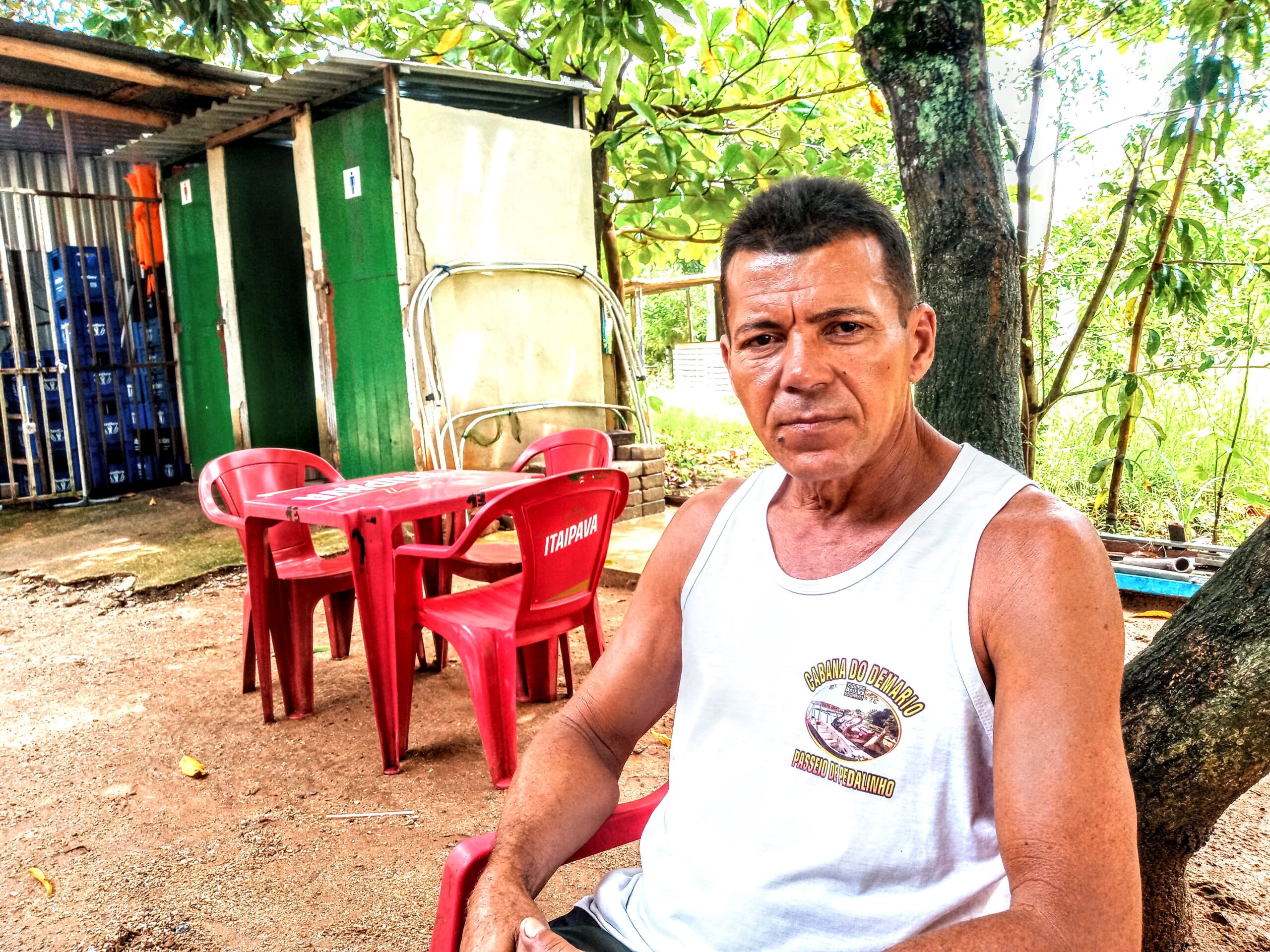
The most delicate case among the fishermen who are committed to continuing to live off the little that the lakes, lagoons, and rivers of the Guandu Environmental Protection Area still have to offer is that of 61-year-old Ivo Manoel do Carmo. With health problems in his joints and as the most economically vulnerable amongst those interviewed, do Carmo removes weeds and construction debris, paints, builds walls (and plasters), all to ensure his survival. He still manages to catch some tiny tilapia that are contaminated by the muddy water.
“I used to make around R$800 (~US$150) a week. Nowadays, I make about R$100 (~US$20) at most, if that. After they ‘cleaned up’ the lagoon, it’s been hard.”
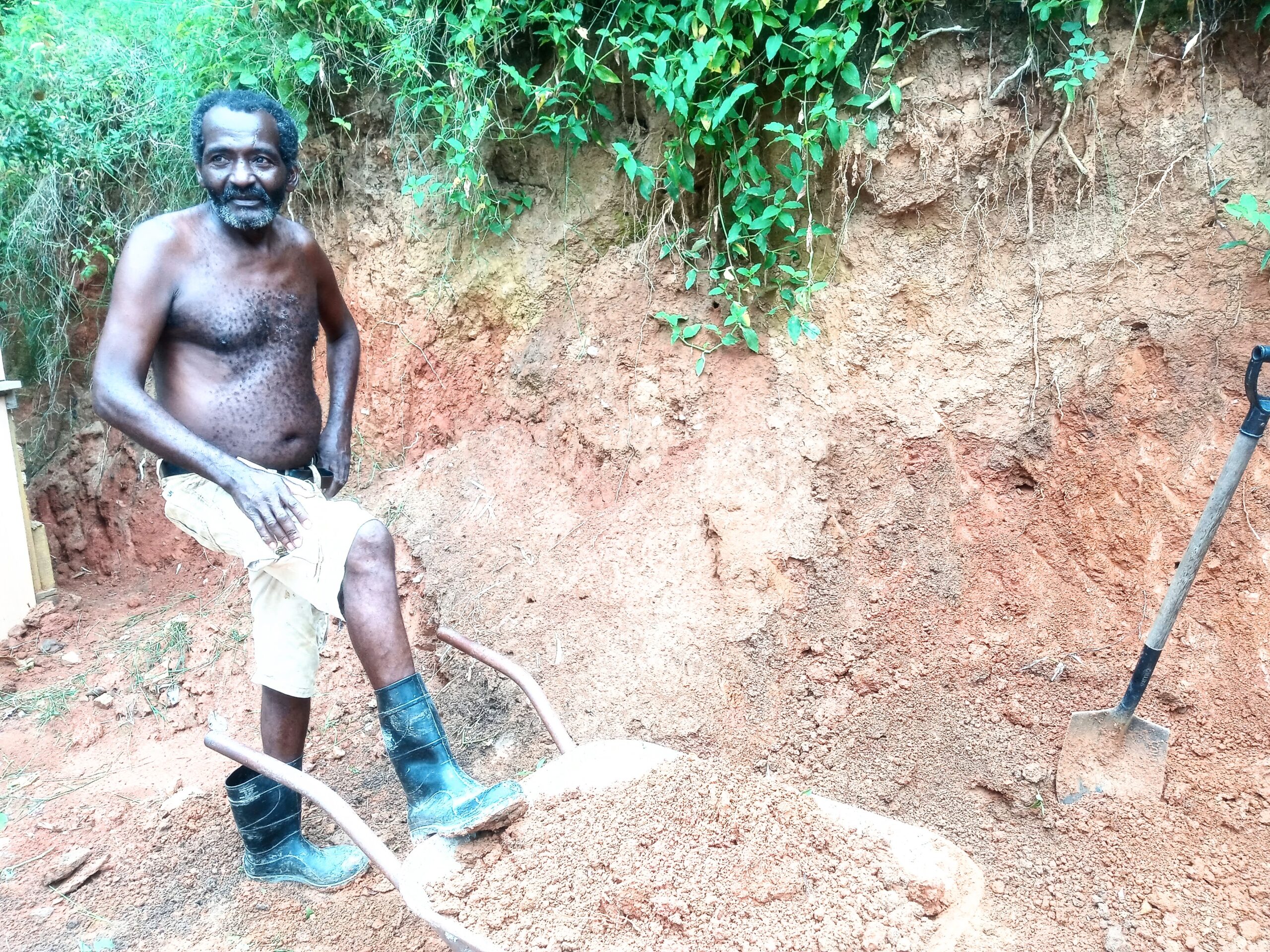
Geosmin and Health Risks
The expression “after they cleaned up,” used by the former fisherman, is a euphemism for a controversial maneuver aimed at managing the crisis caused by geosmin. On January 15, 2020, the then president of CEDAE, Hélio Cabral Moreira, sent a letter to the president of the State Environmental Institute (INEA), Carlos Henrique Vaz, requesting authorization to apply a product called Phoslock to the Guandu River and its three tributaries (the Queimados, Ipiranga and Poços rivers). Phoslock is a type of chemically modified clay with a high fluorine content capable of cleaning sediment and polluting elements present in the water. 260 tons of this product were dumped at a cost of almost R$6 million (~US$1.15 million). This news was reported first-hand on journalist Ruben Berta’s blog.
Geosmin is not toxic, but it is an indicator of water quality, since the growth of cyanobacteria (blue algae) is favored by an increase in the concentration of organic matter due to pollution from household waste (sewage), agricultural fertilizers, and industrial waste discharged directly into rivers and lakes, as well as into sewers. Phoslock in Brazil is produced by the company Hydroscience Consultoria Ambiental, based in the southern state of Rio Grande do Sul. The idea was to use it to reverse pollution.
However, research has demonstrated the product’s potential harm to the environment. An article published by the Brazilian Journal of Water Resources, titled “Application of Phoslock for Phosphorus Removal and Control of Toxic Cyanobacteria,” by researchers from the Institute of Hydraulic Research (IPH) at the Federal University of Rio Grande do Sul (UFRGS), analyzed and demonstrated the possible environmental and human health damage resulting from the use of Phoslock in lakes and rivers. This is confirmed by accounts from residents who witnessed the devastation of Rio de Janeiro’s most important river basin. They report that after the use of Phoslock, there was a near extinction of fish species in Lagoinha do Guandu and nearby cities.
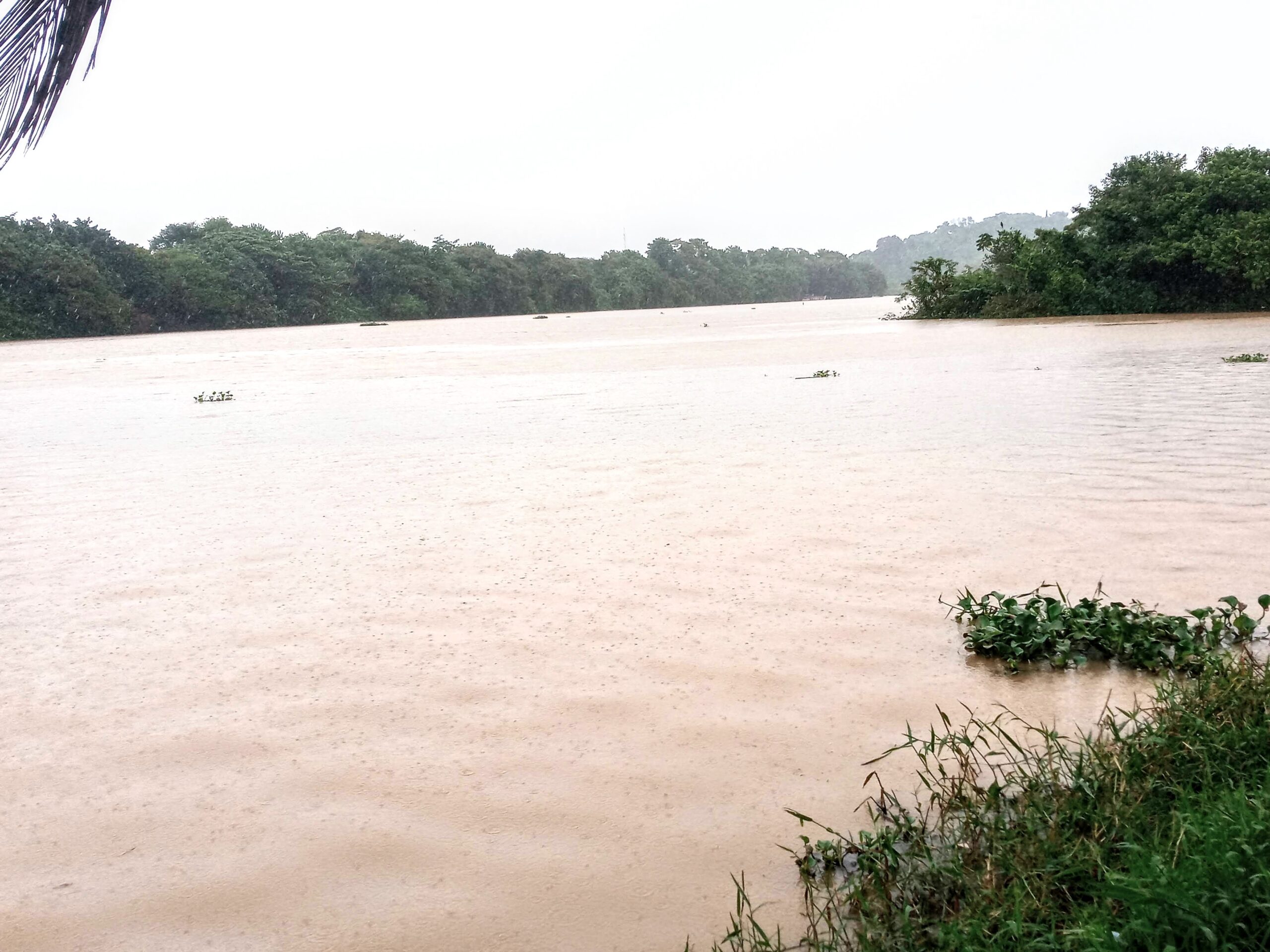
Created in March 2007 through State Decree No. 40,670 and encompassing the municipalities of Engenheiro Paulo de Frontin, Miguel Pereira, Nova Iguaçu, Paracambi, Piraí, Seropédica and Vassouras, the Guandu River Environmental Protection Area is trying to survive a series of attacks against its environmental integrity, and after the geosmin crisis. These are atrocities committed by the State itself by failing to guarantee the right to basic sanitation and clean, quality water, as well as by companies in the Queimados Industrial District, which indiscriminately pollute water sources.
In 2022, the Federal Prosecutors’ Office signed a Conduct Adjustment Agreement (TAC) with the company Duratex S.A (DECA), a manufacturer of sanitary ware and bathroom fixtures, and defendant in a public civil lawsuit after environmental infractions were found on site. According to a document approved by the judge of the Second Civil Court of Queimados, the company committed to adopting a series of adjustments, improvements and modernizations, in addition to paying R$560,000 (~US$107,000) as compensation, to the State Environmental Conservation Fund (FECAM).
The last major disaster in the Guandu Environmental Protection Area involving a company from the Queimados Industrial District took place in August 2023. The company Burn Indústria e Comércio Ltda. was fined for dumping surfactant, a compound present in detergents, into the Queimados River, causing the Guandu Water Treatment Plant to stop for over 13 hours. The Environmental Protection Department (DPMA) even requested the suspension of Burn’s activities “due to the crime of water pollution.”
About the author: Fabio Leon is a journalist, human rights activist, and media advisor with Fórum Grita Baixada.

